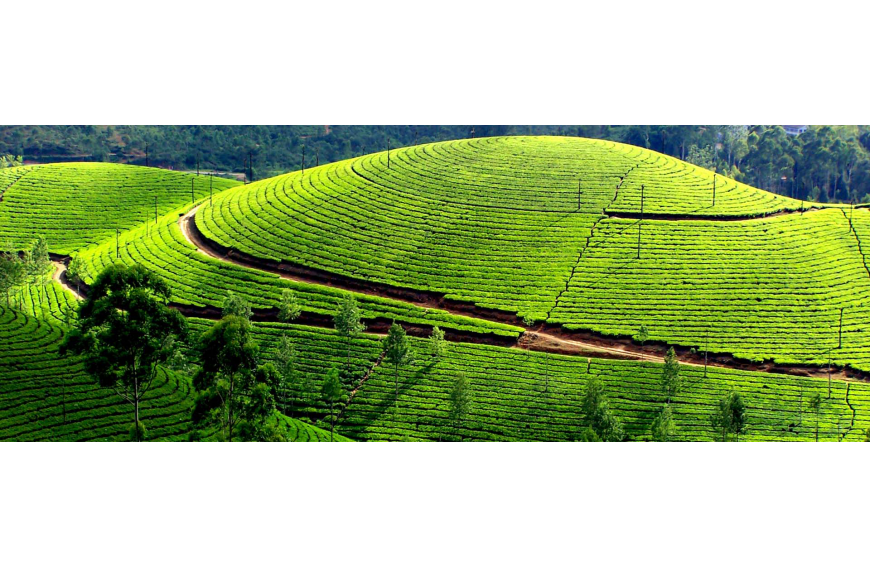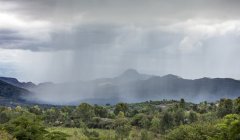What is the best tea in Nepal? How much is the authentic Himalayan black tea per jin?
Twenty years ago, the Nepalese government turned its attention to tea, partly to alleviate rural poverty and, on the other, to generate foreign income through exports of sustainable production. Exports of Himalayan Nepalese tea have expanded and long-term investment since 2001 paid off when Nepal adopted a national strategy to improve the quality of green leaves for the first time. In February this year, the government announced a $1.5 million 36-month sustainable export promotion project that will make traceability and organic production an iconic feature of Nepalese tea. According to government documents, "the National Export Strategy (NES) identified voluntary organic certification as one of the key factors for the success of Nepal's tea industry in the global market and established a traceability system throughout the production process." "Nepalese tea shows great potential in both domestic and international markets," the group said. Transparency advocates say the public announcement of the origin of Nepalese tea will increase global sales. Tea has been grown commercially for 157 years and is the first branded agricultural product in Nepal. In 2018, the government registered the trademark "Nepalese tea quality from the Himalayas". Last September, Nepal issued a certificate allowing 12 of the 42 factories that applied to display the trademark. Trademarks can prevent the loss of fake tea and reputation, and can increase the value of tea. Nine of the 12 factories are in Yilan, where tea was first planted in 1863.

At the ceremony, Bishnu Kumar Bhattarai, executive director of the Nepal Tea and Coffee Development Council (NTCDB), said: "this is a start. If other manufacturers meet the requirements, they will also obtain certificates soon. " "this (traceable) project will complete the brand's work by producing high-quality tea," he told the Kathmandu Post (Kathmandu Post) in February. He called on farmers to be "honest and trustworthy and strive to succeed." Rabin Ray (Rabin Rai), secretary general of the Central Tea Cooperative Association (CTCA), told the Washington Post that a systematic record of planting, processing, transportation, wholesaler trading, packaging and retail details would win good international recognition from consumers. CTCA is committed to "spreading awareness among cooperatives and entrepreneurs and adopting traceability systems and organic certification," he said. In Nepal's long history, almost all exported tea has been used to mix tea, blurring the identity of the region. 80% of the country's tea is grown in Tara (foothills) of Assam, which is processed into CTC (cut, torn). The Chinese shrub variety (sinensis-sinensis), which grows slowly at high altitudes and has a short harvest cycle, has only made 5 million kg by hand. Higher-value "orthodox" tea is bought by Germany, the US, Canada and Japan, accounting for 10 per cent of total exports. Nepal has expanded its cultivation to 13 regions on the basis of the existing five regions, producing a total of 25 million kg in 2019. These areas are mainly located in the west and are more suitable for traditional production. It took NES five years to gain momentum, but over the next decade, the tea trade balance gradually climbed, with employment rising to 70, 000 (equivalent to 30, 000 full-time workers). By 2015, Nepal's total tea exports reached 11 million kg, accounting for 2.68 per cent of Nepal's total merchandise exports. Sales that year were close to 2 billion NPR ($17 million), of which 88 per cent of tea was sold to India. Exports to India have fallen to 80% of total output as Nepal seeks more countries as trading partners. Last year Nepal produced 6000 tons of traditional tea and 19000 tons of CTC. The Centre for Trade and Export Promotion reported that sales fell 13 per cent to 2.78 billion NPR in 2019-20, compared with 3.2 billion NPR in the previous harvest year.
Important Notice :
前街咖啡 FrontStreet Coffee has moved to new addredd:
FrontStreet Coffee Address: 315,Donghua East Road,GuangZhou
Tel:020 38364473
- Prev

Why Indian tea exports first in the world what are the distribution regions and brands of Indian tea?
There was little rain in early spring in Assam and West Bengal, leading to fewer harvesting and factory shutdowns, which are dealing with logistics challenges related to the surge in Covid-19 infection. During the economic slowdown and blockade, many employees were on leave. At the time of this writing, the weather is a greater threat to the tea harvest than Cov.
- Next

Fuding white tea ten famous brands Fuding white tea classification and grading system detailed explanation
Demand for white-labeled tea is growing rapidly. Just a decade ago, the market was clear: pure Chinese native varieties and a few individual varieties from Sri Lanka and Kenya, grown, harvested and processed in narrow and unique ways. Silver needles, white peony and longevity noodles basically constitute the city
Related
- Detailed explanation of the proportion of gold gouache in hand-brewed coffee? What are the Gold Cup Guidelines?
- What is the difference between the gold label rose summer and the red label rose summer in Guixia Village? Are Rose Summer 1931 and Gori Rose Summer?
- Cudi stores ban other brands of coffee?! Netizen: No problem
- Is it better to make coffee cold or hot? Why is it recommended to drink hot coffee?
- Lucky people collapsed! The store ceiling is full of AI surveillance cameras?!
- Law Enforcement Bureau? Mixue Ice City enters Zhengzhou BRT platform!
- Heavy! Nestlé has been exposed to consider selling blue bottle coffee!
- Compensation of 270 million yuan! Starbucks has been charged with violating labor laws more than 500,000 times!
- What are Xizhao coffee beans? Why did they become champion beans? How to rush to the manor on the dividing line in Colombia?
- What does channel effect mean in coffee? Why are there holes in the coffee powder cake?

